ChinaFile Recommends
09.20.12Obama’s Evolution to a Tougher Line on China
New York Times
President Obama’s patience with China had been fraying for months, and by November 2010 he was fed up. Meeting with President Hu Jintao in Seoul, South Korea, Mr. Obama warned that if China did not do more to curb...
ChinaFile Recommends
09.18.12In Car Country, Obama Trumpets China Trade Case
New York Times
In a vivid display of the powers of incumbency, President Obama on Monday filed a broad new trade case against China at the World Trade Organization, announcing the action in this industrial battleground where Mitt Romney has pressed his argument...
ChinaFile Recommends
09.17.12U.S. Files W.T.O. Case Against China Over Cars
New York Times
The United States on Monday filed a broad trade case against China at the World Trade Organization, alleging unfair subsidies for exports of cars and auto parts.
ChinaFile Recommends
09.11.12Who Makes China Exports: Local Companies or Foreign?
Financial Times
Another month of disappointing China trade data: on Monday, overall Chinese exports increased just 2.7 per cent in August from a year earlier, and imports dropped 2.6 per cent. Export growth was higher than July’s worrying 1 per cent, but...
ChinaFile Recommends
09.10.12Buyers Dry Up in China as Economy Slows
Wall Street Journal
China's soft August trade data could presage further weakness in its key export sector in the months ahead, suggesting that the world's No. 2 economy will continue to slow.The data released Monday showed that China's external and...
ChinaFile Recommends
09.06.12Romney’s Young ‘China’ Hand
Forbes
Mitt Romney’s old China hand is more young than old, more Taiwan than China.Lanhee Chen, 34, is Romney’s policy wonk and one of Romney’s brains on China policy. The California born policy director for the Romney campaign said that when it...
ChinaFile Recommends
08.31.12China's Greatest Challenge: Not America, But Itself
Diplomat
As China’s international profile continues to rise in tandem with its economic and political significance, one might conclude that the Chinese public is likely to expect Xi Jinping to carry a higher profile on the international stage. As the leader...
Books
08.29.12
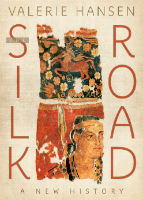
The Silk Road
The Silk Road is as iconic in world history as the Colossus of Rhodes or the Suez Canal. But what was it, exactly? It conjures up a hazy image of a caravan of camels laden with silk on a dusty desert track, reaching from China to Rome. The reality was different—and far more interesting—as revealed in this new history.In The Silk Road, Valerie Hansen describes the remarkable archeological finds that revolutionize our understanding of these trade routes. For centuries, key records remained hidden—sometimes deliberately buried by bureaucrats for safe keeping. But the sands of the Taklamakan Desert have revealed fascinating material, sometimes preserved by illiterate locals who recycled official documents to make insoles for shoes or garments for the dead. Hansen explores seven oases along the road, from Xi'an to Samarkand, where merchants, envoys, pilgrims, and travelers mixed in cosmopolitan communities, tolerant of religions from Buddhism to Zoroastrianism. There was no single, continuous road, but a chain of markets that traded between east and west. China and the Roman Empire had very little direct trade. China's main partners were the peoples of modern-day Iran, whose tombs in China reveal much about their Zoroastrian beliefs. Silk was not the most important good on the road; paper, invented in China before Julius Caesar was born, had a bigger impact in Europe, while metals, spices, and glass were just as important as silk. Perhaps most significant of all was the road's transmission of ideas, technologies, and artistic motifs.The Silk Road is a fascinating story of archeological discovery, cultural transmission, and the intricate chains across Central Asia and China. —Oxford University Press
ChinaFile Recommends
08.27.12China Seeks to Increase Mutual Investments with India
Hindu
China has called for a move to boost mutual investments with India as a measure to strengthen trade ties and reshape what officials have acknowledged is an increasingly unbalanced and strained business relationship, as trade talks between both...
ChinaFile Recommends
07.30.12Interview: Kenneth Lieberthal on Strategic Distrust
Asahi Shimbun
The United States and China have a relatively successful relationship, but their distrust of each other's long-term intentions has reached a potentially dangerous level, says Kenneth Lieberthal, an experienced China expert based in Washington...
ChinaFile Recommends
07.27.12Lies, Damned Lies, and China's Economic Statistics
Wall Street Journal
China's statisticians get a tough press. After all, it was Europe, not China, whose fudged public finance data helped usher in the latest round of global financial turmoil. The biggest corporate fraud in recent memory isn't China's...
ChinaFile Recommends
07.27.12Olympic Uniforms, Congressional Fashion Statements, and the WTO
Chinese Law Prof Blog
Many bloggers have already written about the posturing of certain of our elected representatives on the issue of China-made clothing for US Olympic athletes, using various permutations of the word “idiot” (e.g., Daniel Drezner, “idiocies...
Books
07.26.12
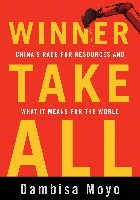
Winner Take All
Commodities permeate virtually every aspect of modern daily living, but for all their importance—their breadth, their depth, their intricacies, and their central role in daily life—few people who are not economists or traders know how commodity markets work. Almost every day, newspaper headlines and media commentators scream warnings of impending doom--shortages of arable land, clashes over water, and political conflict as global demand for fossil fuels outstrips supply. The picture is bleak, but our grasp of the details and the macro shifts in commodities markets remain blurry.Winner Take All is about the commodity dynamics that the world will face over the next several decades. In particular, it is about the implications of China’s rush for resources across all regions of the world. The scale of China’s resource campaign for hard commodities (metals and minerals) and soft commodities (timber and food) is among the largest in history. To be sure, China is not the first country to launch a global crusade to secure resources. From Britain’s transcontinental operations dating back to the end of the 16th century, to the rise of modern European and American transnational corporations between the mid 1860’s and 1870’s, the industrial revolution that powered these economies created a voracious demand for raw materials and created the need to go far beyond their native countries.So too is China’s resource rush today. Although still in its early stages, already the breadth of China’s operation is awesome, and seemingly unstoppable. China’s global charge for commodities is a story of China’s quest to secure its claims on resource assets, and to guarantee the flow of inputs needed to continue to drive economic development. —Basic Books
ChinaFile Recommends
07.24.12A Slowdown is Good for China and the World
Financial Times
What the rest of the world needs from China is not faster growth but more demand. Rebalancing will provide that, although the trade surplus will probably rise before it begins to decline. This will result in falling prices for hard commodities, and...
ChinaFile Recommends
07.13.12Deeper Slowdown Suspected in China
Wall Street Journal
Official data due this week are expected to show growth in China slowing to its lowest rate since the global financial crisis. But some economists say they are turning up evidence that the true picture could be even worse.
ChinaFile Recommends
07.11.12China's Coming Economic Transformation
Wall Street Journal
China is grappling with an economic downturn, but there is more than the usual amount of disagreement about how fast it's slowing down. The battle is not between the usual bulls and bears. The most interesting split this time is between those...
Caixin Media
07.11.12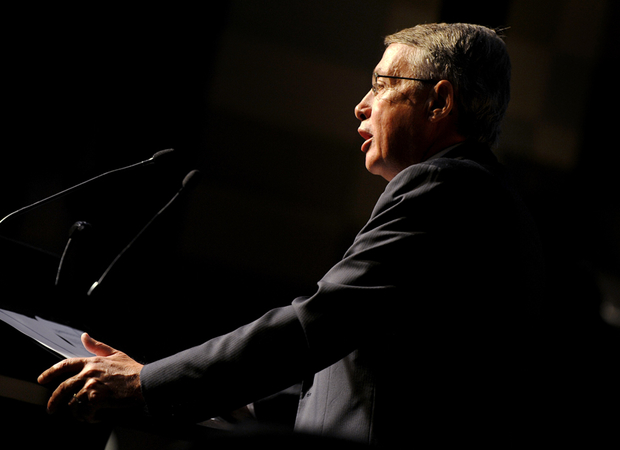
Economic Ties that Bind
Labor leader Wayne Swan has his finger on the pulse of the Australian economy as the nation’s deputy prime minister and treasurer, which means he’s well-equipped to explain factors defining the increasingly robust relationship between China and...
ChinaFile Recommends
07.09.125 Signs of the Chinese Economic Apocalypse
Foreign Policy
The lights are flickering in the world's economic powerhouse. Although China's outlook may still be positive by, say, European standards, the numbers show that the country's storied growth engine has slipped out of gear. Businesses...
ChinaFile Recommends
07.09.12A Hard Landing?
Barron’s
After three decades of annual growth averaging 10%, China's bullet-train economy is slowing markedly. Economic problems in Europe and the U.S. are stunting export growth, long the primary driver of China's economic miracle. Growth in...
ChinaFile Recommends
07.09.12Is the Chinese Economy Running Out of Steam
New Yorker
John King Fairbank, the father of Chinese studies in America, once described China as a “journalist’s dream and a statistician’s nightmare, with more human drama and fewer verifiable facts per square mile than anywhere else in the world.” These days...
ChinaFile Recommends
07.05.12U.S. Files Trade Complaint Against China on Cars
New York Times
The United States filed a trade complaint against China on Thursday for new duties it imposed on American-made cars and trucks. The move came as President Obama kicked off a campaign bus tour through the manufacturing heartland of Pennsylvania and...
Books
04.13.12
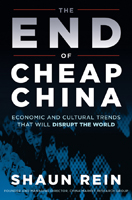
The End of Cheap China
Many Americans know China for manufacturing cheap products, thanks largely to the country's vast supply of low-cost workers. But China is changing, and the glut of cheap labor that has made everyday low prices possible is drying up as the Chinese people seek not to make iPhones, but to buy them. Shaun Rein, Founder of the China Market Research Group, puts China's continuing transformation from producer to large-scale consumer - a process that is farther along than most economists think - under the microscope, examining eight megatrends that are catalyzing change in China and posing threats to Americans' consumption-driven way of life. Rein takes an engaging and informative approach to examining the extraordinary changes taking place across all levels of Chinese society, talking to everyone from Chinese billionaires and senior government officials to poor migrant workers and even prostitutes. He draws on personal stories and experiences from living in China since the 1990s as well as hard economic data. Each chapter focuses on a different aspect of China's transformation, from fast-improving Chinese companies to confident, optimistic Chinese women to the role of China's government, and at the end breaks down key lessons for readers to take away. —John Wiley & Sons, Inc.
Reports
04.01.12
Is China Slowing Down?
American Enterprise Institute for Public Policy Research
With problems in the manufacturing, housing, and export sectors in China, we will likely see slower gross domestic product growth for the world’s second largest economy in 2012. China’s leadership is changing for the first time in a decade, and its...
Books
03.02.12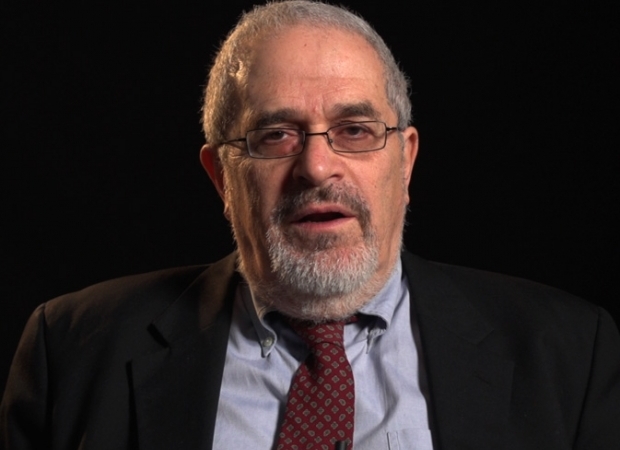
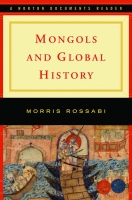
The Mongols and Global History
An accessible, documents-based introduction to the history of the Mongols. The volume opens with a brief original essay by Morris Rossabi, one of the world's foremost scholars on the Mongols. Rossabi's essay gives a historical and interpretive overview of the Mongols and charts their invasions and subsequent rule over the largest contiguous land empire in world history. Following is a rich collection of primary sources translated into English from Armenian, Arabic, Chinese, Franco-Italian, Italian, Korean, Latin, Persian, Russian, Syriac, and Tibetan that will give students a clear sense of the extraordinary geographic and linguistic range of the Mongol Empire as well as insight into the empire's rise, how it governed, and how it fell. Each primary source includes a headnote and study questions. The volume ends with a list of further readings. —WW Norton & Company, Inc.
Reports
02.01.12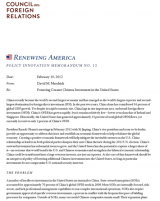
Fostering Greater Chinese Investment in the United States
He Jianan
Council on Foreign Relations
China’s outward investment has substantial room to grow, and the United States has the potential to capture a larger share of it—an outcome that would benefit the U.S. and Chinese economies and strengthen the bilateral economic relationship. China...
Reports
11.10.11
Taiwan and East Asian Regionalism
American Enterprise Institute for Public Policy Research
With a population of only 23 million, Taiwan boasts a gross domestic product of $822 billion, which ranks 19th among the world’s economies. It is the fourth largest economy in Asia. Real GDP per capita increased by roughly 130 percent from 1995 when...
Reports
10.25.11
The Asia-Pacific Economic Cooperation (APEC) Meetings in Honolulu: A Preview
Peony Lui
Congressional Research Service
The United States will host the Asia-Pacific Economic Cooperation’s (APEC’s) 19th Economic Leaders’ Meeting in Honolulu, HI, on November 12 & 13, 2011. APEC was founded in 1989 to facilitate trade and investment liberalization in the Asia-...
Reports
09.30.11
China-U.S. Trade Issues
Peony Lui
Congressional Research Service
U.S.-China economic ties have expanded substantially over the past three decades. Total U.S.-China trade rose from $2 billion in 1979 to $457 billion in 2010. Because U.S. imports from China have risen much more rapidly than U.S. exports to China,...
Sinica Podcast
09.30.11
The Shanghai Train Accident
from Sinica Podcast
At least 284 people were injured on Tuesday when a train in the Shanghai metro smashed into another which had stalled on the tracks. The accident, which threw Shanghai into disarray, came only two months after another near-disastrous incident on the...
Sinica Podcast
09.16.11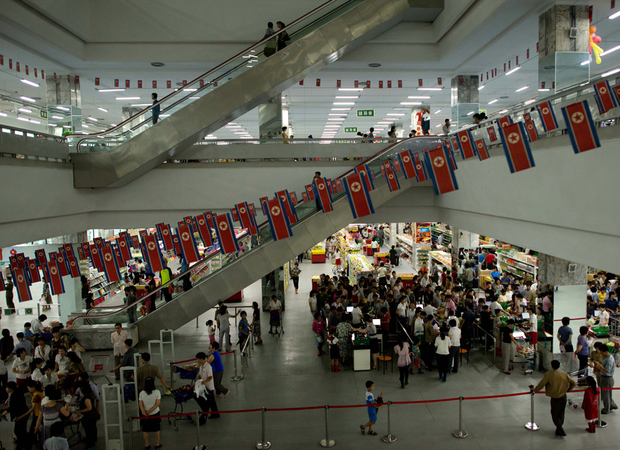
North Korea: Open for Business?
from Sinica Podcast
As the guillotine of debt contagion hangs over Europe, financial pressures in Asia have led an unexpected player to make a strategic shift. After months of escalating tensions with South Korea have shuttered its opportunities for expanded trade...
Books
06.30.11
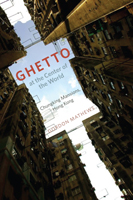
Ghetto at the Center of the World
There is nowhere else in the world quite like Chungking Mansions, a dilapidated seventeen-story commercial and residential structure in the heart of Hong Kong’s tourist district. A remarkably motley group of people call the building home: Pakistani phone stall operators, Chinese guesthouse workers, Nepalese heroin addicts, Indonesian sex workers, and traders and asylum seekers from all over Asia and Africa live and work there—even backpacking tourists rent rooms. In short, it is possibly the most globalized spot on the planet. But as Ghetto at the Center of the World shows us, a trip to Chungking Mansions reveals a far less glamorous side of globalization. A world away from the gleaming headquarters of multinational corporations, Chungking Mansions is emblematic of the way globalization actually works for most of the world’s people. Gordon Mathews’s intimate portrayal of the building’s polyethnic residents lays bare their intricate connections to the international circulation of goods, money, and ideas. We come to understand the day-to-day realities of globalization through the stories of entrepreneurs from Africa carting cell phones in their luggage to sell back home and temporary workers from South Asia struggling to earn money to bring to their families. And we see that this so-called ghetto—which inspires fear in many of Hong Kong’s other residents, despite its low crime rate—is not a place of darkness and desperation but a beacon of hope.
Gordon Mathews’s compendium of riveting stories enthralls and instructs in equal measure, making Ghetto at the Center of the World not just a fascinating tour of a singular place but also a peek into the future of life on our shrinking planet. —University of Chicago Press
Reports
05.01.11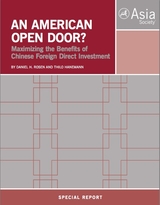
An American Open Door?
Asia Society
Over the past decade, China’s unprecedented surge of economic dynamism and development has radically altered the global landscape and affected a host of international relationships. One of the most significant trends that will influence how the...
Books
12.01.10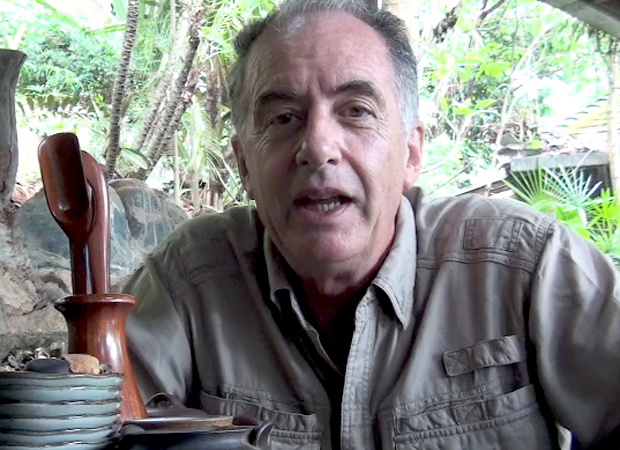
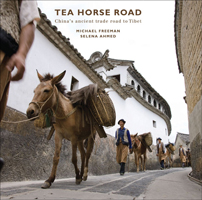
Tea Horse Road
One of the longest and most dramatic trade routes of the ancient world, the Tea Horse Road carried a crucial exchange for 13 centuries between China and Tibet. China needed war horses to protect its northern frontier, and Tibet could supply them. When the Tibetans discovered tea in the 7th century, it became a staple of their diet, but its origins are in southwest China, and they had to trade for it. The result was a network of trails covering more than 3,000 kilometres through forests, gorges and high passes onto the Himalayan plateaus, traversed by horse, mule and yak caravans, and human porters. It linked cultures, economies and political ambitions, and lasted until the middle of the 20th century. Re-tracing the many branches of the Road, photographer and writer Michael Freeman spent two years compiling this remarkable visual record, from the tea mountains of southern Yunnan and Sichuan to Tibet and beyond. Collaborating on this fascinating account, ethnobotanist Selena Ahmed’s description of tea and bio-cultural diversity in the region draws on her original doctoral research.—River Books
Reports
12.01.10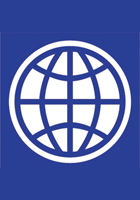
The Role of Trade Costs in Global Production Networks: Evidence from China’s Processing Trade Regime
World Bank
This paper uses data from China's processing trade regime to analyze the role of trade costs on trade within global production networks (GPNs). Under this regime, firms are granted duty exemptions on imported inputs as long as they are used...
Reports
09.21.10
China’s Steel Industry and Its Impact on the United States: Issues for Congress
Peony Lui
Congressional Research Service
China’s steel industry has grown significantly since the mid-1990s. China is now the world’s largest steelmaker and steel consumer. The majority of Chinese steel has been used to meet domestic demand in China. However, as its steel production...
Reports
04.21.10
What’s the Difference?—Comparing U.S. and Chinese Trade Data
Peony Lui
Congressional Research Service
There is a large and growing difference between the official trade statistics released by the United States and the People’s Republic of China. According to the United States, the 2009 bilateral trade deficit with China was $226.8 billion. According...
Reports
03.24.10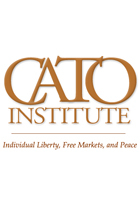
Appreciate This: Chinese Currency Rise Will Have a Negligible Effect on the Trade Deficit
Cato Institute
This report argues that the Obama administration and Congress should consider whether RMB appreciation would even lead to the outcomes they desire—namely, more balanced trade. The evidence does not support their objective. Although the short-term...
Reports
02.04.10
The 2009 Asia Pacific Economic Cooperation (APEC) Meetings and U.S. Trade Policy in Asia
Peony Lui
Congressional Research Service
Congress and the Executive Branch have historically identified the Asia Pacific Economic Cooperation forum (APEC) as potentially important in the promotion of liberalized international trade and investment in Asia, and possibly the rest of the world...
Reports
12.11.09
China’s Economic Conditions
Peony Lui
Congressional Research Service
Since the initiation of economic reforms and trade liberalization thirty years ago, China has been one of the world’s fastest-growing economies and has emerged as a major economic and trade power. The combination of large trade surpluses, FDI flows...
Reports
11.16.09
The Rise of China’s Auto Industry and Its Impact on the U.S. Motor Vehicle Industry
Peony Lui
Congressional Research Service
The automobile industry, a key sector in China’s industrialization and modernization efforts, has been developing rapidly since the 1990s. In recent years, China has become the world’s fastest growing automotive producer. Annual vehicle output has...
Reports
07.16.09
East Asia’s Foreign Exchange Rate Policies
Peony Lui
Congressional Research Service
Financial authorities in East Asia have adopted a variety of foreign exchange rate policies, ranging from Hong Kong’s currency board system which links the Hong Kong dollar to the U.S. dollar, to the “independently floating” exchange rates of Japan...
Reports
03.31.09
Asia Pacfic Economic Cooperation (APEC) and the 2008 Meetings in Lima, Peru
Peony Lui
Congressional Research Service
Congress and the Executive Branch have historically identified the Asia Pacific Economic Cooperation (APEC) as an important organization to help promote the U.S. goal of liberalizing international trade and investment in Asia, and possibly the rest...
Reports
12.19.08
Sino-Japanese Relations: Issues for U.S. Policy
Peony Lui
Congressional Research Service
After a period of diplomatic rancor earlier this decade, Japan and China have demonstrably improved their bilateral relationship. The emerging detente includes breakthrough agreements on territorial disputes, various high-level exchanges, and...
Reports
08.24.08
Energy Interests and Alliances: China, America and Africa
EastWest Institute
According to conventional wisdom, the United States and China are locked in a high-stakes competition for energy resources around the world, particularly in Africa. Against the backdrop of highly volatile oil prices, mounting concerns about global...
Reports
11.01.07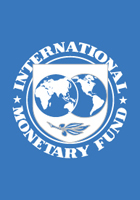
China's Changing Trade Elasticities
International Monetary Fund (IMF)
In recent years, much has been written about the China's rising current account surplus and the importance of its exchange rate policy. At the same time, the increasing integration of China into the global economy has raised questions about how...
Reports
09.01.07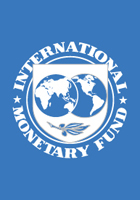
The Shifting Structure of China's Trade and Production
International Monetary Fund (IMF)
This paper uses disaggregated trade data to assess how the expansion of China's production capacity and its changing production structure may be affecting its trade linkages with other countries. It finds that China is moving away from...
Reports
01.13.07
Is China a Threat to the U.S. Economy?
Peony Lui
Congressional Research Service
The rise of China from a poor, stagnant country to a major economic power within a time span of only twenty-eight years is often described by analysts as one of the greatest economic success stories in modern times. From 1979 (when economic reforms...
Reports
01.04.07
China’s Trade with the United States and the World
Peony Lui
Congressional Research Service
As imports from the People’s Republic of China (PRC) have surged in recent years, posing a threat to some U.S. industries and manufacturing employment, Congress has begun to focus on not only access to the Chinese market and intellectual property...
Reports
07.11.06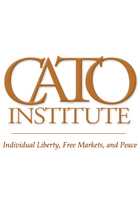
Who’s Manipulating Whom? China’s Currency and the U.S. Economy
Cato Institute
Congress and the Bush administration continue to pressure China to allow its currency to appreciate against the U.S. dollar under threat of trade sanctions. Critics contend “currency manipulation” gives Chinese producers an unfair advantage against...
Reports
04.20.05
China’s Growing Interest in Latin America
Peony Lui
Congressional Research Service
Over the past year, increasing attention has focused on China’s growing interest in Latin America. Most analysts appear to agree that China’s primary interest in the region is to gain greater access to needed resources—such as oil, copper, and iron—...
Reports
01.01.05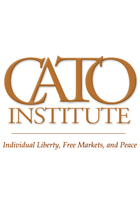
Exchange Rate and Monetary Policy in China
Cato Institute
China's account surplus has increased sharply as a product of economic growth and manipulation of its undervalued currency. This paper argues that China's account surplus is actually higher than reports indicate. China’s monetary...
Reports
05.20.04
China-U.S. Relations: Current Issues for the 108th Congress
Peony Lui
Congressional Research Service
During the George W. Bush Administration, U.S. and People’s Republic of China (PRC) foreign policy calculations have undergone several changes. The Bush Administration assumed office in January 2001 viewing China as a U.S. ”strategic competitor.”...
Reports
08.06.03
China and the World Trade Organization
Peony Lui
Congressional Research Service
After many years of difficult negotiations, China, on December 11, 2001, become a member of the World Trade Organization (WTO), the international agency that administers multilateral trade rules. Under the terms of its WTO membership, China agreed...
Reports
08.01.03
Asia Pacific Economic Cooperation (APEC), Free Trade, and the 2003 Summit in Bangkok, Thailand
Peony Lui
Congressional Research Service
On October 20-21, 2003, the Eleventh APEC Leader’s Meeting is to be held in Bangkok, Thailand. The theme for APEC 2003 is “A World of Differences: Partnership for the Future,” which is intended to bring together the best potential of all APEC...
Reports
01.31.03
China-U.S. Relations
Peony Lui
Congressional Research Service
In the wake of the September 11, 2001 terrorist attacks against the United States, U.S. and PRC foreign policy calculations appear to be changing. The Administration of George W. Bush assumed office in January 2001 viewing China as a U.S. “strategic...
Reports
10.17.02
Asia Pacific Economic Cooperation (APEC), FreeTrade, and the 2002 Summit in Mexico
Peony Lui
Congressional Research Service
On October 26-27, 2002, the Tenth APEC Leaders’ Meeting (summit) is to be hosted by Mexico in Las Cabos, Mexico. APEC 2002 is intended to send a clear message to the world that APEC has the ability to implement its initiatives while responding and...
Reports
10.26.01
Asia Pacific Economic Cooperation (APEC), Free Trade, and the 2001 Summit in Shanghai
Peony Lui
Congressional Research Service
On October 20-21, 2001, the Ninth APEC Leaders’ Meeting (summit) was hosted by China in Shanghai. The theme for APEC 2001 was “Meeting New Challenges in the New Century: Achieving Common Prosperity through Participation and Cooperation” with the sub...
Reports
04.24.00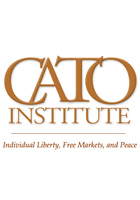
China’s Long March to a Market Economy
Cato Institute
The U.S. Congress is in the historic position of being able to help pro-reform leaders in China move their country in a market-oriented direction. A vote to grant China permanent normal trade relations (PNTR) status will bolster the position of...
Reports
07.19.99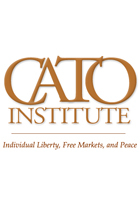
Trade and the Transformation of China
Cato Institute
Congress will soon consider whether to revoke normal trade relations (NTR) with China and then, possibly in the fall, whether to make NTR permanent as part of China’s anticipated entry into the World Trade Organization. The consequences of...
The NYRB China Archive
02.03.94Where the East Begins
from New York Review of Books
Between 1965 and 1977, Donald Lach published the first two volumes of his Asia in the Making of Europe, an illuminating and erudite survey of the various ways that Asia has affected scholarship, literature, and the visual arts in the West. Beginning...



